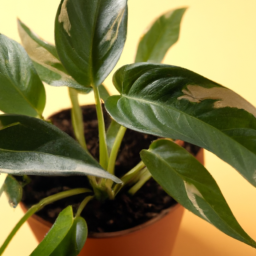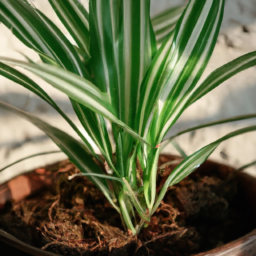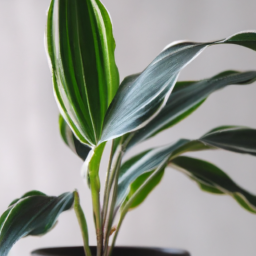
Are you a beginner when it comes to indoor plants? Don’t worry, you’re not alone! Many people are eager to bring some greenery into their homes but feel unsure about where to start. That’s why we’ve put together this blog post to guide you through the world of indoor plants for beginners. Whether you have a green thumb or not, we’ll help you choose the perfect plants that are easy to care for and will thrive in your home. So, let’s dive in and discover the joy of indoor gardening!
Choosing the Right Indoor Plants for Beginners
Welcome to the world of indoor plants! Whether you are a beginner or have some experience with gardening, choosing the right indoor plants can make all the difference in creating a thriving and beautiful indoor garden. In this guide, we will walk you through the process of selecting the perfect indoor plants for beginners.
Understanding Your Indoor Space
Before diving into the world of indoor plants, it’s important to assess your indoor space. Take a good look at the available natural light, temperature, and humidity levels. These factors will determine the types of plants that can thrive in your space.
If you have a bright and sunny spot near a window, you can opt for plants that require high light levels. Examples include succulents, cacti, and some tropical plants like the snake plant or spider plant. On the other hand, if your space is dimly lit or lacks direct sunlight, you can choose low light plants such as pothos, peace lilies, or ZZ plants.
Temperature and humidity levels also play a crucial role in plant selection. Some plants prefer warm and humid conditions, while others can tolerate cooler temperatures. Consider the average temperature and humidity in your home and choose plants accordingly. For beginners, it’s best to start with plants that are more forgiving and can adapt to a range of conditions.
Considering Maintenance and Care
As a beginner, it’s important to choose indoor plants that are relatively easy to care for. Some plants require more attention and specialized care, which might be overwhelming for beginners. Here are a few factors to consider when it comes to maintenance:
Watering: Overwatering is a common mistake among beginners. Choose plants that have lower water requirements and are more forgiving if you forget to water them occasionally. Succulents, snake plants, and ZZ plants are great options as they can tolerate periods of drought.
Pruning and Propagation: Some plants require regular pruning to maintain their shape and size. If you prefer low-maintenance plants, look for options that don’t require frequent pruning. Additionally, consider if you want plants that can be easily propagated, allowing you to grow new plants from cuttings.
Pest and Disease Resistance: Certain plants are more prone to pests and diseases. As a beginner, it’s best to choose plants that are known for their resilience and resistance to common pests. This will save you from potential headaches and the need for extensive pest control.
Adding Aesthetic Appeal
While selecting indoor plants for beginners, it’s essential to consider their aesthetic appeal. Indoor plants can enhance the beauty of your living space and create a soothing environment. Here are a few factors to keep in mind:
Size and Growth Habit: Consider the available space in your home and choose plants that fit well. Some plants grow tall and require vertical space, while others are more compact and suitable for smaller spaces. Additionally, think about the growth habit of the plant – whether it cascades, spreads, or grows upright.
Foliage and Flowering: Indoor plants come in a variety of foliage colors, patterns, and textures. Determine whether you prefer plants with vibrant flowers or those with stunning foliage. This will help you narrow down your options and create a visually appealing indoor garden.
Pots and Planters: The choice of pots and planters can also contribute to the overall aesthetic. Consider the material, color, and style of the containers that will complement your indoor decor. Ensure that the pots have proper drainage to avoid waterlogging issues.
By considering these factors – understanding your indoor space, maintenance and care requirements, and aesthetic appeal – you are well on your way to choosing the right indoor plants for beginners. Remember, it’s important to start with a few plants and gradually expand your collection as you gain more experience and confidence in indoor gardening. Enjoy the journey of bringing nature indoors and witnessing the beauty and benefits of indoor plants!

Essential Care Tips for Indoor Plants for Beginners
Introduction
Indoor plants are a wonderful addition to any home or office space. They not only enhance the aesthetic appeal but also provide numerous health benefits. However, if you are a beginner in the world of indoor gardening, it can be overwhelming to know where to start. Don’t worry, we’ve got you covered! In this guide, we will provide you with essential care tips for indoor plants that are perfect for beginners. So, let’s dive in and create a thriving indoor green oasis!
Choosing the Right Indoor Plants
When it comes to indoor plants, it’s essential to choose the right ones that suit your environment and lifestyle. Consider factors such as lighting conditions, temperature, and the amount of care you can provide. Here are a few beginner-friendly indoor plants to get you started:
1. Spider Plant (Chlorophytum comosum): Spider plants are incredibly adaptable and can thrive in various lighting conditions. They are low-maintenance, making them perfect for beginners.
2. Snake Plant (Sansevieria trifasciata): Snake plants are known for their resilience and ability to tolerate neglect. They thrive in low light and require minimal watering, making them ideal for busy individuals.
3. Pothos (Epipremnum aureum): Pothos is a popular choice for beginners due to its ability to tolerate a wide range of lighting conditions. It is a trailing plant that adds a touch of greenery to any space.
Providing Adequate Lighting
Proper lighting is crucial for the growth and overall health of indoor plants. Most houseplants fall into three categories based on their lighting requirements:
1. Low Light Plants: These plants can survive in areas with minimal natural light, such as rooms with small windows or shaded corners. Examples include snake plants, pothos, and ZZ plants (Zamioculcas zamiifolia).
2. Medium Light Plants: These plants thrive in bright, indirect light. They can be placed near a north-facing window or a few feet away from an east or west-facing window. Some popular choices include peace lilies (Spathiphyllum), ferns, and spider plants.
3. High Light Plants: These plants require direct sunlight for a significant portion of the day. They should be placed near a south-facing window or under grow lights. Examples include succulents, cacti, and some varieties of palms.
Watering and Humidity
Watering is another vital aspect of caring for indoor plants. Overwatering or underwatering can lead to various issues, such as root rot or dehydration. Here are some general watering tips for beginners:
1. Check the Soil Moisture: Before watering your plants, check the moisture level of the soil. Stick your finger about an inch deep into the soil. If it feels dry, it’s time to water, but if it’s still moist, hold off for a few more days.
2. Watering Techniques: When watering, ensure that water reaches the root zone. Avoid wetting the leaves excessively, as this can promote fungal diseases. Water thoroughly until it drains out of the bottom of the pot, ensuring proper hydration.
3. Humidity: Indoor environments can be dry, especially during the winter months when heaters are running. Increase humidity levels by placing a tray filled with water near your plants or using a humidifier. This helps mimic their natural habitat and prevents leaf browning or curling.
Regular Maintenance and Troubleshooting
To keep your indoor plants thriving, regular maintenance is essential. Here are a few tips to help you:
1. Dusting: Dust can accumulate on the leaves, hindering photosynthesis. Wipe the leaves gently with a damp cloth or use a soft brush to remove dust and keep them clean.
2. Pruning: Trim any yellowing or dead leaves to maintain the overall health and appearance of your plants. Pruning also encourages new growth.
3. Pest Control: Keep an eye out for common indoor plant pests like spider mites or aphids. If you notice any signs of infestation, isolate the affected plant and treat it with an appropriate organic insecticide or insecticidal soap.
Remember, each plant has its unique care requirements, so it’s crucial to research and understand the specific needs of your indoor plants. By following these essential care tips, you’ll be well on your way to becoming a successful indoor gardener. Enjoy the beauty and benefits of your indoor green oasis!

Common Mistakes to Avoid when Starting with Indoor Plants
Introduction
Starting with indoor plants can be an exciting and rewarding experience. Not only do they add beauty and freshness to your living space, but they also have numerous health benefits. However, as a beginner, it’s important to be aware of some common mistakes that can hinder your success with indoor plants. In this guide, we will discuss three common mistakes to avoid and provide you with practical tips on how to overcome them.
1. Overwatering
One of the most common mistakes beginners make when it comes to indoor plants is overwatering. It’s easy to think that more water is better for the plants, but in reality, overwatering can lead to root rot and other problems. It’s crucial to understand the watering needs of each plant species you have and create a watering schedule accordingly.
To avoid overwatering, always check the soil moisture before watering. Stick your finger about an inch deep into the soil, and if it feels dry, it’s time to water. Additionally, choose pots with drainage holes to ensure that excess water can escape. Remember, it’s better to underwater than overwater, as most indoor plants can tolerate slight drought conditions.
Another helpful tip is to use a well-draining potting mix. This will prevent water from pooling at the bottom of the pot, reducing the risk of root rot. Finally, consider the humidity levels in your home. Some plants, like ferns and tropical plants, thrive in higher humidity, while others prefer drier conditions. Adjusting the humidity levels can help prevent overwatering.
2. Insufficient Light
Another common mistake beginners make is not providing enough light for their indoor plants. Light is essential for photosynthesis, the process by which plants convert light into energy. Without sufficient light, your plants may become weak, leggy, and prone to diseases.
When choosing indoor plants, consider the lighting conditions in your home. Some plants, like succulents and cacti, thrive in bright, direct sunlight, while others, such as snake plants and pothos, can tolerate lower light conditions. Place your plants near windows or in areas with bright, indirect light to ensure they receive the necessary light for healthy growth.
If natural light is limited in your home, you can supplement it with artificial lighting. LED grow lights are a popular choice for indoor gardening. They provide the right spectrum of light for plant growth and can be adjusted to meet the specific needs of different plant species. Place the lights close to the plants, about 6-12 inches away, and keep them on for 12-16 hours a day.
3. Lack of Proper Plant Care
Lastly, a lack of proper plant care is a common mistake that beginners often make. Indoor plants require regular care to thrive, and neglecting their needs can lead to poor growth and even plant death. It’s important to understand the specific care requirements of each plant you have and provide them with the necessary attention.
Regularly check your plants for signs of pests, diseases, or nutrient deficiencies. Inspect the leaves, stems, and soil for any abnormalities. If you notice any issues, take immediate action to address them. Remove pests manually or use organic pest control methods. Adjust watering and fertilizing routines if necessary.
Fertilizing is another crucial aspect of plant care. Indoor plants generally require less frequent fertilization compared to outdoor plants. Use a balanced, water-soluble fertilizer and follow the instructions on the packaging. Over-fertilizing can lead to nutrient burn, so it’s important to apply the correct amount.
Additionally, don’t forget to prune your plants regularly. Pruning helps promote bushier growth and prevents legginess. Remove any dead or yellowing leaves, as they can attract pests and hinder the overall health of the plant. Lastly, repot your plants when necessary to provide them with fresh soil and room for growth.
Conclusion
Starting with indoor plants can be a wonderful journey, but it’s important to avoid common mistakes that can hinder your success. Remember to avoid overwatering by checking soil moisture and using well-draining pots. Provide sufficient light by placing your plants near windows or using artificial lighting. Lastly, give your plants the care they deserve by regularly checking for pests, diseases, and nutrient deficiencies, and providing proper pruning and repotting. With these tips in mind, you’ll be well on your way to becoming a successful indoor plant enthusiast. Happy gardening!
Crisp Recap
Indoor plants are a great way to bring a touch of nature into your home, and they come with a whole host of benefits. Not only do they add beauty and freshness to your living space, but they also improve air quality by filtering out toxins and releasing oxygen. If you’re new to the world of indoor plants and don’t know where to start, fear not! This blog post will guide you through some easy-to-care-for options that are perfect for beginners.
One great choice for beginners is the spider plant. These hardy plants are known for their long, arching leaves that resemble spider legs, hence the name. Spider plants are incredibly resilient and can tolerate a wide range of light conditions, making them perfect for any room in your home. They are also great at purifying the air and are safe for pets, so you don’t have to worry about any potential harm to your furry friends.
Another beginner-friendly option is the pothos plant, also known as devil’s ivy. Pothos plants are known for their trailing vines and heart-shaped leaves, which come in various shades of green. These plants are incredibly forgiving and can tolerate low light conditions, making them a great choice for those with limited sunlight in their homes. Pothos plants also have air-purifying qualities and are known to remove toxins like formaldehyde from the air, making them a great addition to any indoor space.
Your Questions Answered. Comprehensive FAQ:
Q1: What are some easy-to-care-for indoor plants for beginners?
A1: If you’re new to indoor gardening, there are several low-maintenance plants that are perfect for beginners. Some popular options include pothos, snake plant, spider plant, and ZZ plant. These plants are known for their ability to thrive in a variety of indoor conditions and require minimal attention.
Q2: How often should I water my indoor plants?
A2: The watering frequency for indoor plants can vary depending on factors such as the type of plant, pot size, and environmental conditions. As a general rule, it’s best to allow the top inch or so of soil to dry out before watering again. Overwatering can lead to root rot, so it’s important to avoid keeping the soil constantly wet.
Q3: What kind of lighting do indoor plants need?
A3: Most indoor plants thrive in bright, indirect light. Place them near a window where they can receive filtered sunlight throughout the day. However, it’s important to note that different plants have varying light requirements. Some plants, like succulents, prefer more direct sunlight, while others, like ferns, can tolerate lower light levels.
Q4: How do I prevent pests from infesting my indoor plants?
A4: Pest infestations can be a common issue in indoor gardening. To prevent pests, regularly inspect your plants for any signs of insects or damage. Keep your plants clean by wiping the leaves with a damp cloth to remove dust and debris. If you notice pests, you can try using natural remedies like neem oil or insecticidal soap to control them.
Q5: Can indoor plants improve air quality in my home?
A5: Yes, indoor plants can help improve air quality by filtering out toxins and releasing oxygen. Certain plants, such as peace lilies, spider plants, and snake plants, are particularly effective at removing common indoor pollutants like formaldehyde, benzene, and xylene. Adding these plants to your home can contribute to a healthier indoor environment.

James Wong is a renowned ethnobotanist, plant scientist, and local television presenter. With a passion for demystifying plant science, he is known for translating complex botanical concepts into practical advice for everyday plant enthusiasts. James’s expertise spans from traditional gardening to cutting-edge plant technologies, making his insights accessible and informative.


